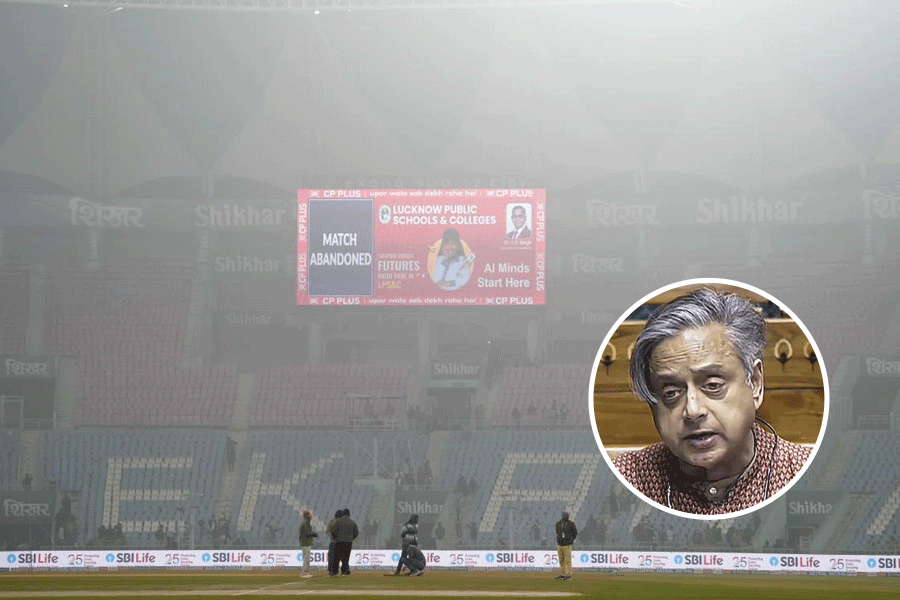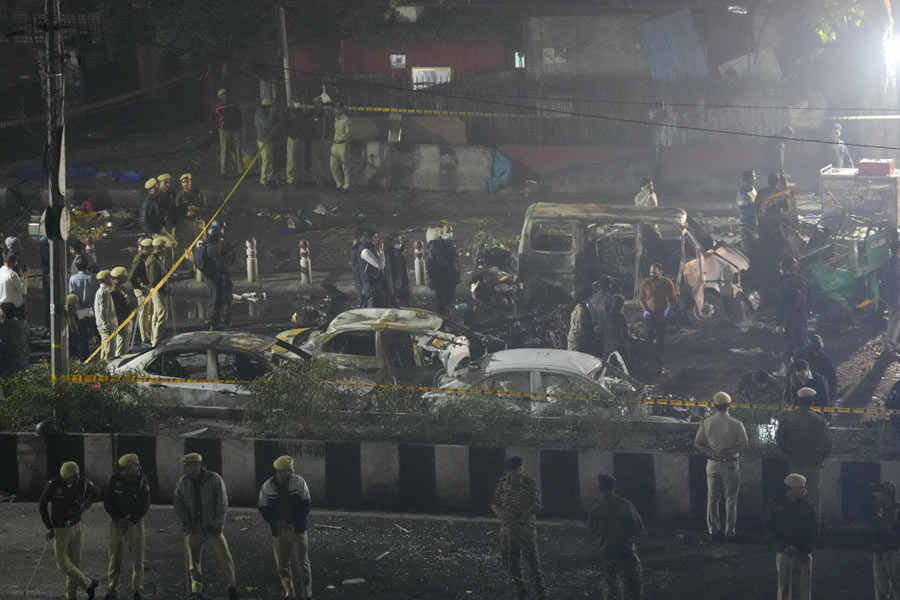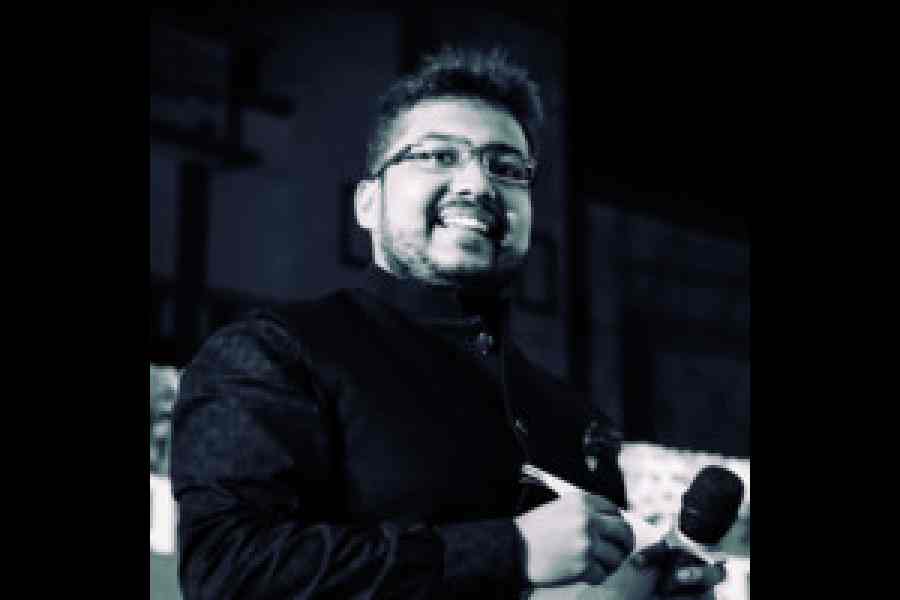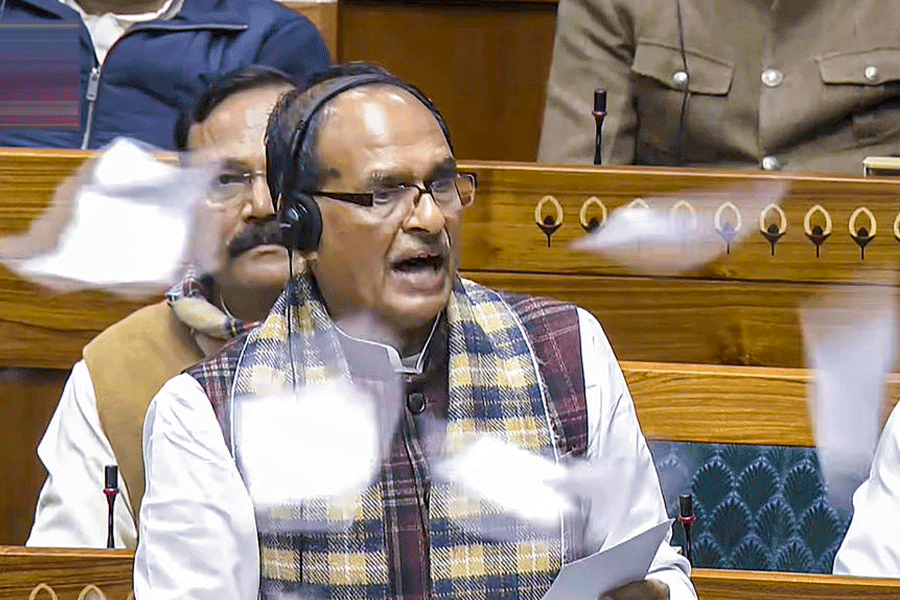SOUTHERN COMFORT
 |
| Raja Paan Shop |
Where: Lake Market, off Rashbehari Avenue
Second home: Footloose South Indians found a safe haven in Komala Vilas ever since it opened doors in the 1930s. The greyish building with an open terrace is one of the first lodging houses to come up in the area. “People would initially put up for a few weeks but soon a few families stayed back to settle here. Later, many more started coming in,” says Komala Vilas owner B. Sridhar.
“Little wonder then that a road in Lake Market has been rechristened Subramanya Bharathi Sarani, after the celebrated Tamil poet,” says film-maker Ashoke Viswanathan, whose grandfather V. Narayan Swami made Calcutta his home in the 1930s.
The look and feel: It’s a mini Madras out there — Udupi restaurants dish out idli-dosa, the aroma of filter coffee fills the air, women mill around the market with gajra in their hair and men chat in groups with traditional tika smeared on their foreheads. To drive home the point, posters of a Tamil film starring Kamal Hassan plaster walls. Stores like Raja Paan Shop have everything to make the South Indians feel at home, from Andhra fish masala to banana chips, oils, agarbattis and appams.
The South India Club is a few minutes’ walk at Hindustan Park and down Manoharpukur Road is the Sree Guruvayurappan temple where priests in traditional attire perform the evening puja. But with many moving on to the Gulf for better jobs, the Madrasi paan and Malayalam Manorama find fewer takers these days.
Overheard: “This is possibly one of the few areas in Calcutta where the Chennai edition of The Hindu is in great demand. Also, South Indian women’s magazines like Vanitha and Grihalaxmi,” says K. Rajan, who owns Raja Paan Shop.
GUJARAT CAPITAL
 |
| Lakshminarayan Temple |
Where: Bhowanipore (the Lansdowne-Chakraberia-Puddapukur belt)
Second home: Business brought the Gujaratis to Burrabazar, Chitpur and Ezra Street almost a century ago. But Bhowanipore is where they chose to strike roots.
“As business and lifestyle improved, many Gujaratis opted to live in Bhowanipore,” says Dilip Shah, a professor of commerce at Bhawanipur Gujarati Education Society.
The look and feel: Lakshminarayan Temple on Sarat Bose Road is the nerve centre of the people from Gujarat in Calcutta. It’s far more than a place of worship. The men in the courtyard sit and track the Sensex, while the women inside sing bhajans. The temple banquet hall gets ready to host a wedding even as a group of Gujarati travellers makes its way to the temple guesthouse.
“There’s a very strong community feeling among Gujaratis in Calcutta,” observes Shah. That is evident from a host of Gujarati associations and institutions — the Gujarat Samaj, Friend’s Sporting Club and Bhawanipur Education Society — springing up over the years. Hulchul, a monthly newsletter, is a big hit in Bhowanipore.
Overheard: “Many people have left Calcutta as the economy in Gujarat has flourished over the past few years. There has been a reverse migration of sorts,” says Shah.
CHINA TOWN
 |
| Chinese New Year decoration in Tangra |
Where: Tangra
Second home: After trade brought them to town, Chinabazar Road in Burrabazar emerged as the first Chinese ghetto. Then the community spread to Tiretta Bazar, Ezra Street and Bentinck Street. But Tangra, the tiny “hamlet” off EM Bypass, remains the hub with its dwindling tanneries and flourishing restaurants.
“About 600 families, comprising around 4,500 members, have made Calcutta their home,” says Paul Chung, the president of the Indian Chinese Association for Culture, Welfare and Development.
The look and feel: Come February and a trail of (human) dragons whooshes out of the Tangra lanes to celebrate the Chinese New Year. For the rest of the year, the quiet lanes leading to Tangra from the Bypass occasionally wake up to the honking of cars heading for a restaurant. Hemmed in by featureless, stolid buildings, the alleys snake past some of the famous stops in Chinese cuisine — Kim Ling, Beijing, Big Boss, Hot Wok Village, the list goes on…. The entrance to most of the eateries glows with a warm red light; a dragon with blazing eyes keeping guard. The smell of broth blends with a whiff of the leather tanneries…
Overheard: “We are an invisible race. We’ve always been a close-knit, isolated and self-sufficient community and have stayed among our own. But slowly things are changing. The current generation has learnt to value Calcutta as their home. They are moving out of Tangra and Bentinck Street areas, and settling in various parts of the city,” smiles Chung.
PARSI PATHOS
 |
| Parsi Fire Temple |
Where: Metcalfe Street, Bowbazar
Second home: The Parsi Fire Temple at 91 Metcalfe Street, built in 1912, was the epicentre of the community. But the headcount has dwindled drastically over the years — from 4,500 in the 1960s to 700 in 2008. Many have moved out of the city; some have shifted to pockets as diverse as Park Street, Palm Avenue and Salt Lake. Back on Metcalfe Street, 10 Zoroastrian families live in a building close to the temple.
The look and feel: The 96-year-old Fire Temple, a greyish building ensconced in a dingy bylane off Metcalfe Street, mirrors the mood. The fire burns day and night on the top floor, but there are no devotees in sight. The once pulsating Parsi para is in deep slumber.
Bustling Bow Street is quite a contrast, with a steady stream of Parsi travellers knocking on the door of Maneckji Rustmoji Parsi Dharamshala, a two-storeyed yellow building. “The fact that the Dharamshala serves Parsi delicacies like dhansak and chicken curry brings in quite a few boarders,” explains temple in-charge Shohrab Kotwal.
Bonding is the buzzword for Parsis all over the world. The Parsi Club on Chowringhee is a favourite haunt of the salt-and-pepper brigade. The young and old come together to celebrate Navroze, the Parsi New Year, and other festivals.
Overheard: “We are a tiny minority in a very populous city. The Bowbazar area still has some old-timers but the population is dwindling fast…. We help each other in times of need,” says N.F. Tankariwala, a member of the West Bengal Minorities Commission.
FLAVOURS OF PUNJAB
 |
| Sant Kutiya Gurdwara |
Where: Stretches of Bhowanipore (Harish Mukherjee Road and adjoining areas), Dunlop and Alipore
Second home: The railways, jute mills, coal mines and shipping industry lured the Punjabis to Calcutta, pre-Independence. They branched out in all directions — Alipore, New Alipore, Russell Street and Park Street. But Bhowanipore and Dunlop are the biggest pockets for Punjabi settlement.
“A number of Punjabis moved to Calcutta post-Partition, but the tendency to stick together developed only after the 1984 riots,” feels Pramod Duggal, a member of Punjab Club.
The look and feel: If the Punjabis come calling, can Makki di Roti and Sarson da Saag be far behind? No way. And who knows it better than the ever-popular dhabas? Balwant Singh’s Eating House on Harish Mukherjee Road is a winner. There are many who stop by to grab a bite, perched on scooters or seated inside cars. Those not in a hurry sip on Special Chai, a thick milky concoction topped with kesar and served in jumbo-sized earthen cups.
A stone’s throw away, strains of kirtan float down from the Sant Kutiya Gurdwara. Devotees filing in and out are mostly matronly ladies in salwar kameez, but young women in jeans and tees aren’t an unusual sight either. If the pious spend their evenings at the gurdwara, those looking for some fun and froth walk into the Punjab Club on Ballygunge Circular Road. “This is a place where you will run into boisterous back-slapping Punjabis. There’s a feeling of warmth and bonhomie that is so characteristically Punjabi. The club is actually a glorified dhaba,” laughs Duggal.
Overheard: “We have adopted Calcutta as our own home, which is probably why there hasn’t been a substantial drop in the population,” says Duggal.
EAST BY NORTHEAST
 |
| Northeast students hang out |
Where: Salt Lake
Second home: Most are here for higher studies. Though they hang out all over town, the majority flocks to Salt Lake where PG accommodation and to-let flats are easy to get. The Mizoram House nearby also helps matters. “Salt Lake is open and green; it reminds me of home,” says Aizawl girl Teresa Sailo, an English literature student at Calcutta University. Golf Green — with Jadavpur University close by — is the second choice, but cheaper accommodation is also driving some to the bylanes of north Calcutta.
The look and feel: If you walk through Salt Lake in the evening, chances are you will bump into a youngster from the Northeast at every other step. After a busy day, sundown is when they step out for food, music and fresh air.
Overheard: “We have an association in Calcutta for people hailing from the Northeast. We meet on a regular basis,” smiles college student Angela Wanglet.










